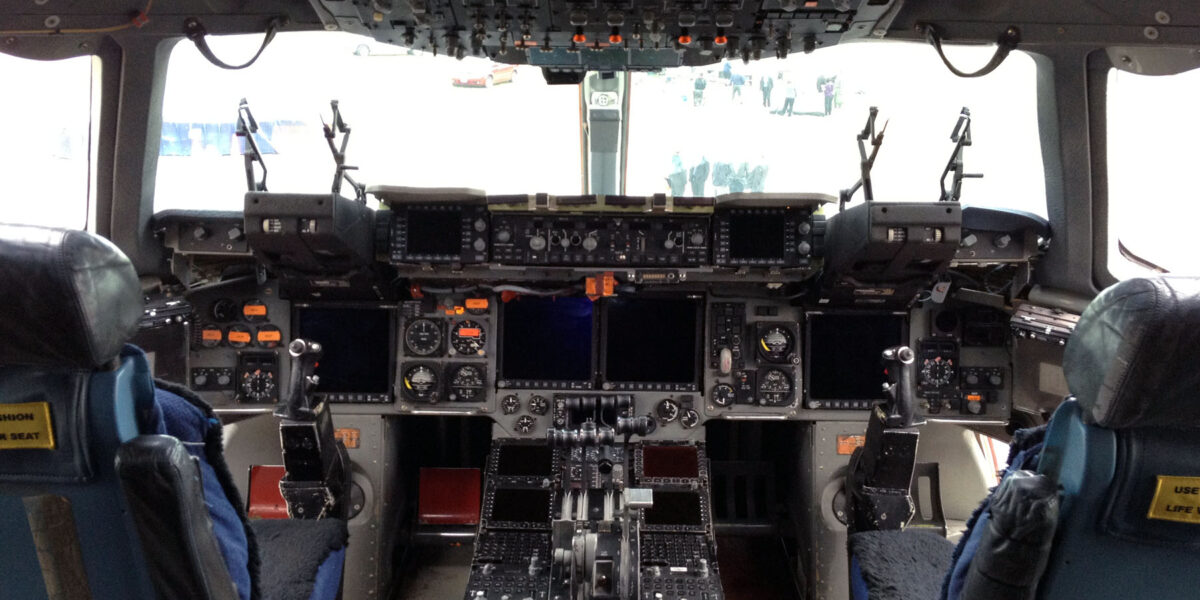C-17 Cockpit: Pilot Perspective

The C-17 Cockpit: Exploring Its Design and Functionality
The C-17 Globemaster III is a military transport aircraft developed by McDonnell Douglas, now part of Boeing. This aircraft plays a critical role in transporting troops and equipment across the globe. To understand its capabilities, it’s essential to delve into the cockpit’s design and functioning.
Overview of the C-17 Cockpit

The cockpit of the C-17 is a complex but user-friendly environment designed to support the aircraft’s diverse missions. It accommodates two pilots and an additional loadmaster, demonstrating an efficient use of space to maximize operational effectiveness. The layout is meticulously crafted to ensure that pilots can access essential controls and information quickly.
Unlike many older aircraft, the C-17 cockpit features a fully integrated digital avionics system. This digital system offers advanced navigation and communication capabilities. It showcases displays that provide pilots with real-time data about the aircraft’s status and environment. These features facilitate the safe and efficient operation of the aircraft in various conditions.
Display Systems and Interface
The cockpit is equipped with multiple Multi-Function Displays (MFDs). These screens allow pilots to access navigational maps, engine performance data, and system warnings. Through the MFDs, pilots can monitor flight progress and diagnose any technical issues. The use of digital displays reduces the clutter of traditional dials and gauges, enhancing focus and situational awareness.
The Head-Up Display (HUD) in the C-17 projects critical flight information directly into the pilot’s line of sight. This allows for constant monitoring of speed, altitude, and heading without needing to look away from the flight path. The HUD is particularly useful during takeoffs and landings, where rapid adjustments are often necessary.
Controls and Instrumentation
The cockpit is designed with advanced fly-by-wire controls. Fly-by-wire systems replace the traditional mechanical linkages with electronic interfaces, leading to smoother and more precise control of the aircraft. This technology improves responsiveness and contributes to the aircraft’s impressive maneuverability.
Pilots have access to an autopilot system that can maintain altitude, heading, and speed over long distances. This system reduces pilot workload in routine flying conditions, allowing them to focus on strategic aeronautical and mission-specific tasks.
Communication and Navigation Systems
Effective communication and navigation are vital for the C-17’s mission success. The aircraft’s cockpit is equipped with secure, satellite-based communication systems. These systems ensure that pilots can maintain contact with other aircraft and ground control throughout their missions, regardless of location.
For navigation, the C-17 relies on a combination of GPS and inertial navigation systems. These tools provide precise location data, helping pilots navigate through diverse and challenging environments. The redundancy of multiple navigation aids ensures continuous operation even in the event of a system failure.
Cockpit Ergonomics
The designers of the C-17 cockpit placed a high priority on ergonomics. Controls and displays are arranged to minimize pilot fatigue, enabling long-duration missions without compromising performance. Seats are adjustable and provide adequate support, accommodating pilots of different sizes and preferences.
Attention to ergonomics extends to the cockpit’s ambient lighting, which can be adjusted according to the time of day and operational conditions. This feature prevents pilot eye strain and supports alertness during long flights.
Safety Features
Safety is paramount in the design of the C-17 cockpit. Collision avoidance systems and weather radar are integral parts of its avionics suite. These systems alert pilots to potential hazards and provide guidance to avert them effectively.
The cockpit includes advanced fire suppression systems for engine and cabin fires. This ensures that both the crew and the aircraft are well-protected in emergency scenarios.
Loadmaster Coordination
The inclusion of a loadmaster station within the cockpit highlights the importance of cargo management. The loadmaster monitors cargo weight distribution, ensuring that the aircraft maintains optimal balance during flight. Communication between pilots and the loadmaster is seamless, supporting efficient cargo operations in all mission phases.
Technological Upgrades and Future Developments
Boeing continues to enhance the C-17 with advanced technology. Upgrades focus on improving avionics systems, enhancing fuel efficiency, and integrating next-generation communication tools. These efforts ensure that the C-17 remains a versatile and reliable asset for military operations worldwide.
Future developments may include further automation of cockpit tasks, enabling pilots to manage increasingly complex scenarios with ease. Such innovations will continue to enhance the C-17’s operational capabilities.
Conclusion
Understanding the design and functionality of the C-17 cockpit provides insight into its operational efficiency. The combination of advanced technology and ergonomic design ensures that pilots can perform their duties effectively and safely, paving the way for successful mission outcomes.
C-17 Pilot Gear and Resources
Essential items for C-17 pilots and aviation enthusiasts:
This article contains affiliate links. We may earn a commission on purchases at no additional cost to you.
Subscribe for Updates
Get the latest articles delivered to your inbox.
We respect your privacy. Unsubscribe anytime.